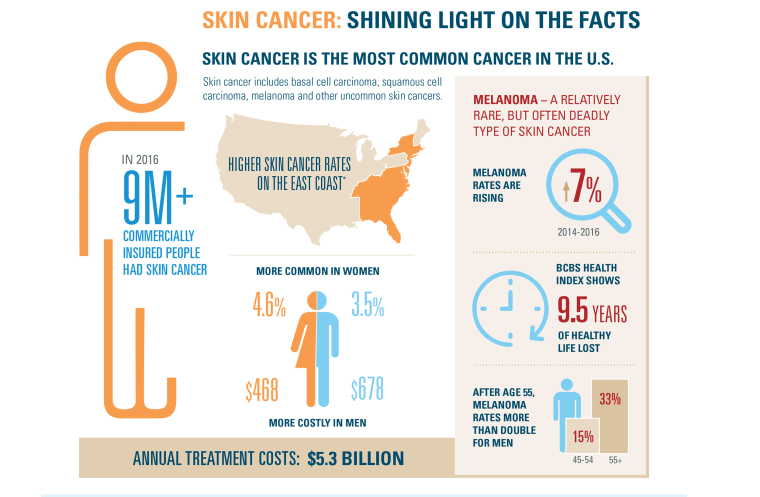At first, Kelly Leggett wasn't bothered by the mole behind his right ear. It was getting bigger and oozing, but because he had no other symptoms, his doctor told him not to worry. Four years later — after the mole kept changing — Leggett finally went to a dermatologist for a biopsy.
In July 2007 he was diagnosed with stage 4 melanoma. A chest X-ray he received after the biopsy also came back abnormal — the cancer had spread to his lymph nodes, lungs, spine, liver, spleen and pelvis.
Leggett was stunned. “I went in to remove a mole for cosmetic reasons," said Leggett, who had gone on a 20-mile bike ride just days before his diagnosis. "I knew nothing about melanoma. It’s surprising to know that something can progress to that level and you don’t even know it.”

Leggett, now 56, is one of a growing number of middle-aged men being diagnosed with melanoma, the deadliest form of skin cancer. Not only are Caucasian men between the ages of 55 and 64 more likely to develop melanoma than women, they often have more aggressive forms of the disease, according to a new report from Blue Cross Blue Shield. Overall, rates of melanoma among its 41 million members are up about seven percent in the last four years. Not only are men more likely to be diagnosed with melanoma, they're also more likely to die from it, the health insurer's report found.
Why is melanoma worse in men?
It's unclear whether a higher mortality rate is because men are diagnosed later when the cancer has reached a more advanced stage or gender differences in tumor biology. Recently published data in Nature and The Skin Cancer Foundation suggest the genetics behind melanoma may play a larger role in mortality among men than previously thought.

“In my own practice I have seen a significantly higher number of men over 50 compared to women,” said Dr. Sunandana Chandra, melanoma medical oncologist at the Robert H. Lurie Comprehensive Cancer Center Northwestern University in Chicago, Illinois.
“One factor could be differences in chronic sun exposure — men traditionally have had more outdoor occupations than women and that would put them at risk for sun burn and prolonged UV radiation exposure.”
Another reason could be that men in their 50s and 60s were less likely to use sunscreen when they were younger.
“We didn’t think we looked good or ‘healthy’ unless we had a tan," Leggett said. "I spent many hours in my teens and 20s laying out in the sun — put some baby oil on, burn, peel, repeat… until the tan took hold.”
Dermatologists and cancer researchers agree that the factors that lead to more skin cancer in middle-aged men is complex.
“There are many theories out there including male use of tanning beds and climate change — the ozone is less protective now allowing more UV rays to penetrate our atmosphere," said Dr. Carlo Contreras, surgical oncologist and assistant professor of surgery at University of Alabama Birmingham. "UV exposure is the biggest factor for developing melanoma in a lifetime, but now we also know that the number of blistering sunburns especially in childhood contributes to long term risk of developing melanoma.”

Skin cancer is the most common cancer in the United States, with about 9,500 people diagnosed with some form every day, according to the American Academy of Dermatology. By age 50, men are more likely than women to develop melanoma. This number jumps by age 65, making men 2 times as likely as women of the same age to get melanoma.
In 2018, over 178,000 Americans are expected to be diagnosed with melanoma. Almost half will be diagnosed with skin cancer that spreads below the top layers of skin, called invasive melanoma. Over 9,000 will die of the disease.
Melanoma is preventable by protecting the skin — wearing big hats or light clothing — or properly applying sunscreen. It is also important to perform skin examinations regularly. If a suspicious mole begins to change in shape or color, a doctor should be contacted immediately.
If caught early, melanoma can be easily cured.
